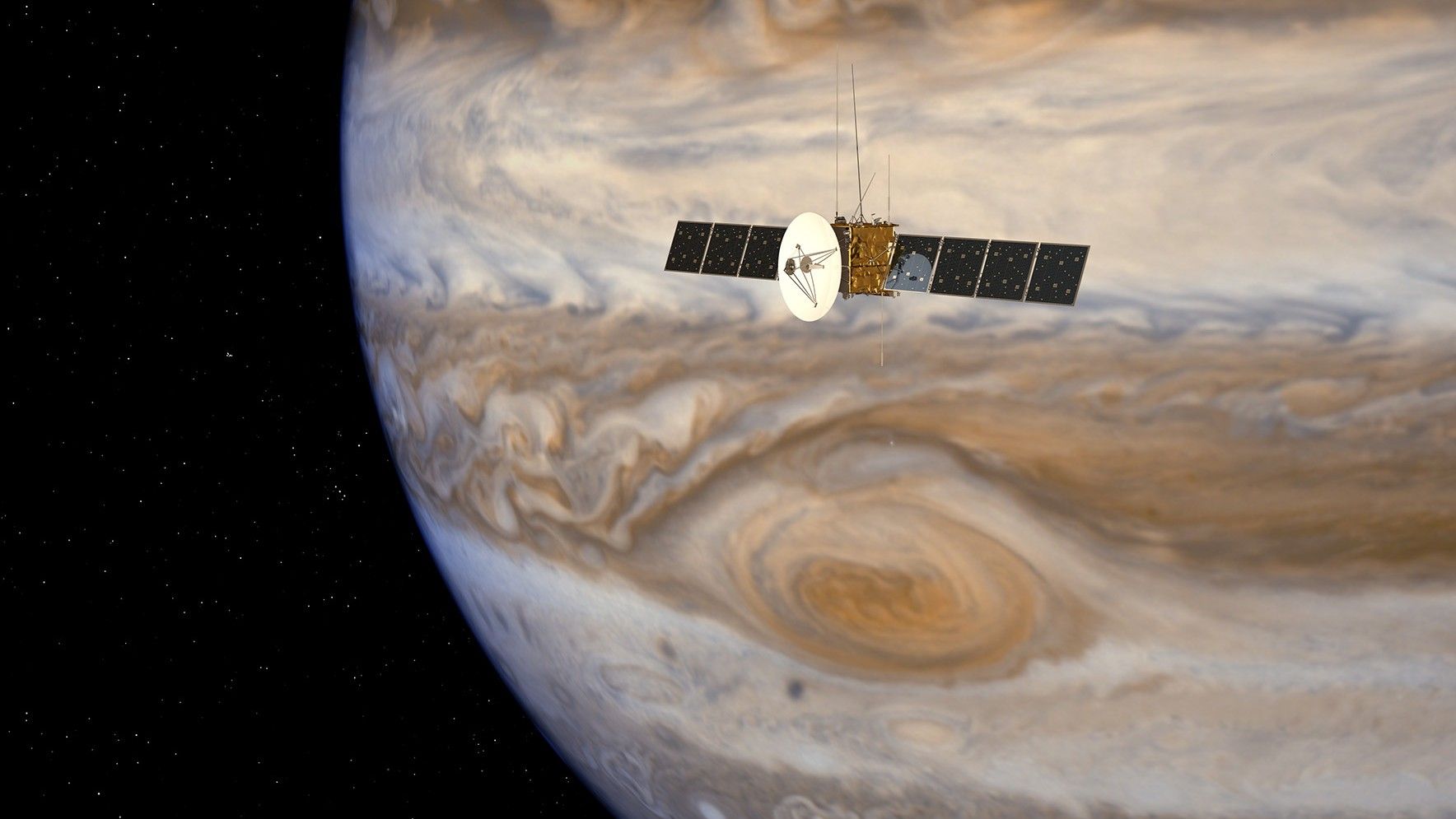The world has just witnessed the takeoff of the most ambitious mission to date to study the gas giant of the solar system. The European Space Agency (ESA) has successfully launched the JUICE mission: a spacecraft that left its mother planet this Friday and has started its nine-year journey towards the gigantic and enigmatic Jupiter. This spectacular European mission, designed to look for traces of life on the icy moons of this distant planet, took off this noon from the Kourou spaceport in French Guiana.
Does more than a decade that scientists work on the design of this space mission. And it is that Jupiter, despite being the largest planet in our neighborhood, is still surrounded by enormous mysteries. The The most important enigmas center on their moons: some celestial bodies recovered from ice that, according to some studies, could be recovered by large oceans (and if we are lucky, they could even harbor some traces of life). JUICE’s trip will focus, above all, on the analysis of the three most fascinating satellites of Jupiter: ganymede (the largest moon in the solar system), Callisto (one of the oldest) and Europe (discovered by Galileo in 1610).
The spacecraft will fly over the satellites Ganymede, Callisto and Europa
The European probe is preparing to analyze this intriguing corner of the universe with an arsenal of state-of-the-art scientific tools. The ship has ten high precision instruments to, for example, photograph the surface of these celestial bodies in great detail, x-ray their atmosphere and study their magnetic field. These tools have been devised and developed by international teams of scientists. Spain, through Institute of Astrophysics of Andalusia, Ha contributed to the design of two of these instruments. In addition, the design of the mission has also included the participation of Spanish researchers from the University of the Basque Country and the Center for Astrobiology (CAB, CSIC-INTA).
mission schedule
Related news
The mission plan is as follows. After leaving its mother planet, this spaceship will travel for years through space. It will reach Jupiter around 2032.. From there, it will orbit the gas giant for about four years (enough time to travel its diameter about 66 times). during that stage closely study the planet’s atmospherethe rings that surround it and its impressive constellation of moons. The probe also plans to fly over the Europa satellite twice, Callisto 21 times and Ganymede 20 more times. Towards the end of the mission, fuel permitting, JUICE will try to get even closer to the planet’s surface. Finally, around 2035, the mission will end its days crashing into the frozen ground of one of the moons.
The results of this mission will not only allow understand more (and better) ‘what air is breathed’ on a giant gas planet located about 750 million from our sun. As explained by the promoters of this European scientific project, the study of Jupiter will allow us to glimpse how the other gas giants discovered around thousands of stars of our cosmos. In fact, it is estimated that the vast majority of exoplanets discovered to date are gaseous worlds like Jupiter and also have several icy moons around them. At least on paper, if we understand how one of these systems works we can extrapolate this image to other distant worlds.

